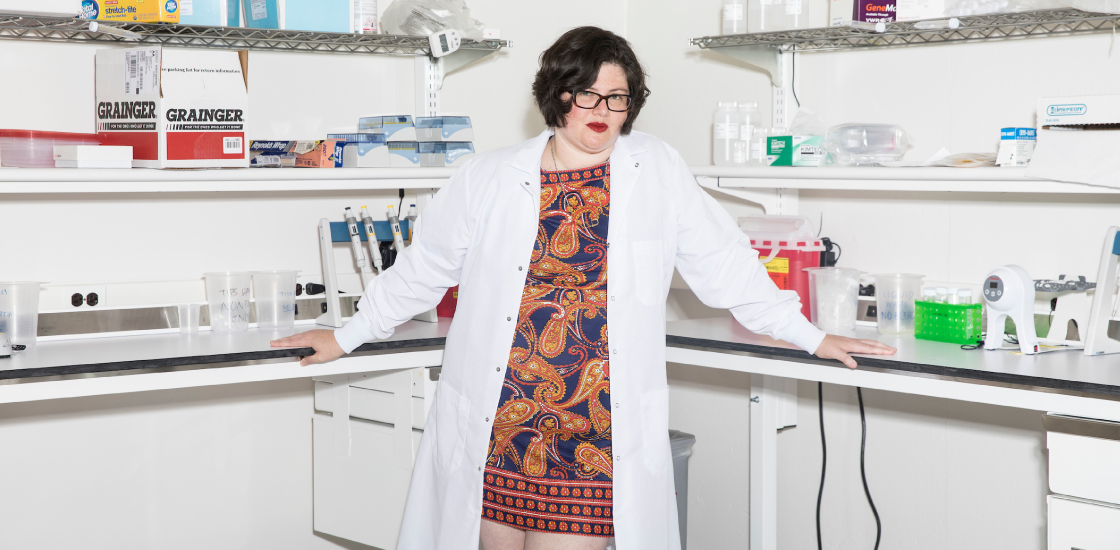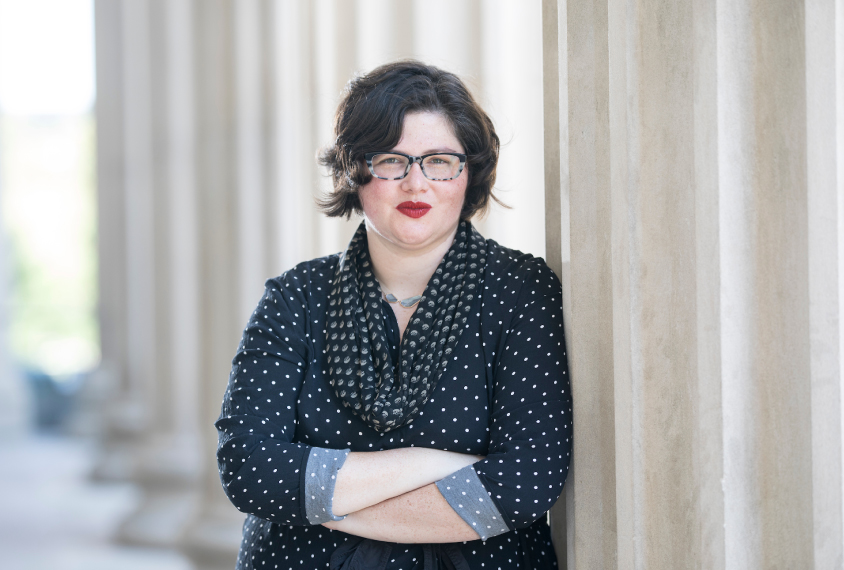Beyond the bench: A conversation with Nicola Grissom
Mouse-model researcher Nicola Grissom snacks on chocolate-covered espresso beans and pops bubble wrap to stay focused.

In 2015, Nicola Grissom traveled to a small town in Maine for a research conference and came to find herself singing karaoke in a room full of scientists.
As the first day’s formal activities wound down, Grissom and her colleagues spotted a microphone and projector in one of the conference rooms. They decided that rocking out to “Total Eclipse of the Heart” would be a more enjoyable way to break the ice than making small talk over drinks. And thus was born the tradition of late-night karaoke at the annual Gordon Research Conference on Catecholamines.
Grissom studies the molecular basis of autism and sex differences that underlie the condition at her University of Minnesota lab. She told Spectrum why she wishes more people would cancel plans with her, and why bubble wrap is a must-have item.
Spectrum: What are you working on now?
Nicola Grissom: My lab is interested in decision-making. People on the spectrum have a different approach to making decisions than typical people do. Their approach is beneficial in scenarios that require a lot of evidence, and problematic in others that require them to make a decision quickly.
We are monitoring how mice make decisions, using touchscreen games built for rodents. And it turns out that there are big differences between how male and female mice handle this, with females making good decisions more quickly. We can’t wait to see what this means for mouse models of autism.
S: Who is your dream collaborator?
NG: [The singer] Janelle Monáe. Oh, wait, you meant scientifically. A dream project would be to think about sex-specific expression of genes with Jessica Tollkuhn, assistant professor at Cold Spring Harbor Laboratory, and Jeremy Day, assistant professor of neurobiology at the University of Alabama at Birmingham. If this gets published, they’re on notice.
S: What is your day like?
NG: Ideally, I analyze data in the morning and write late at night. The middle is for conversations.
I also try to keep my days as varied as possible. Some people need clear and regular schedules. I need variety. I make time to get lunch or coffee with colleagues a few times a week. I also make time for impromptu conversations. Sometimes I learn some cool science; sometimes I learn more about my colleagues as people. Both are important.
S: When and where are you most productive?
NG: The secret to productivity is 1) to have a meeting scheduled in 10 minutes, and 2) to get stood up for this meeting. You say to yourself, “I will use these 10 minutes to work on X.” And before you know it, an hour has passed, you have your specific aims drafted, and you didn’t even see the, “Sorry, need to reschedule” email. I wish more people would cancel meetings with me.
S: What are you reading?
NG: Being an autism researcher means keeping up with a dozen fields, from large genetic studies to human neuropsychology, from computational modeling of behavior to circuits and synapses. Of course, we specialize to some extent based on the tools we prefer. But this field isn’t well suited to traditional research silos. So I take my cool science wherever it’s published.
I don’t have any journal subscriptions. Twitter fills me in on interesting new work, especially on bioRxiv, as does Google Scholar and F1000 for things already published.
S: What do you eat or drink while you’re working?
NG: I always keep chocolate-covered espresso beans and a cup of tea on my desk. I also have handy a sheet of bubble wrap to pop while I think.
S: How many unread emails are in your inbox right now?
NG: A lady never tells her age, weight or unread email count — not even to her doctor.

Recommended reading

Among brain changes studied in autism, spotlight shifts to subcortex
Home makeover helps rats better express themselves: Q&A with Raven Hickson and Peter Kind
Explore more from The Transmitter

Dispute erupts over universal cortical brain-wave claim
Waves of calcium activity dictate eye structure in flies

